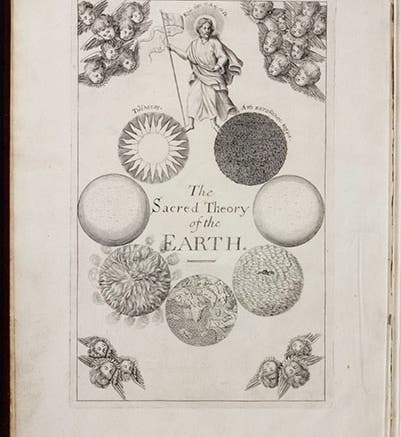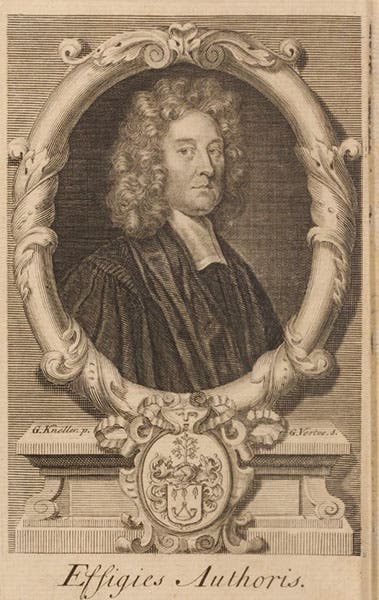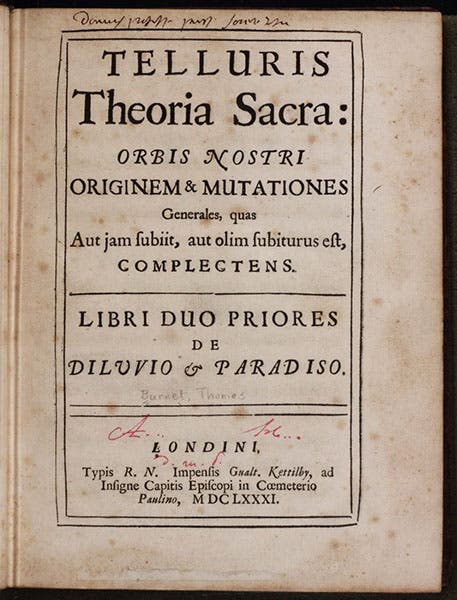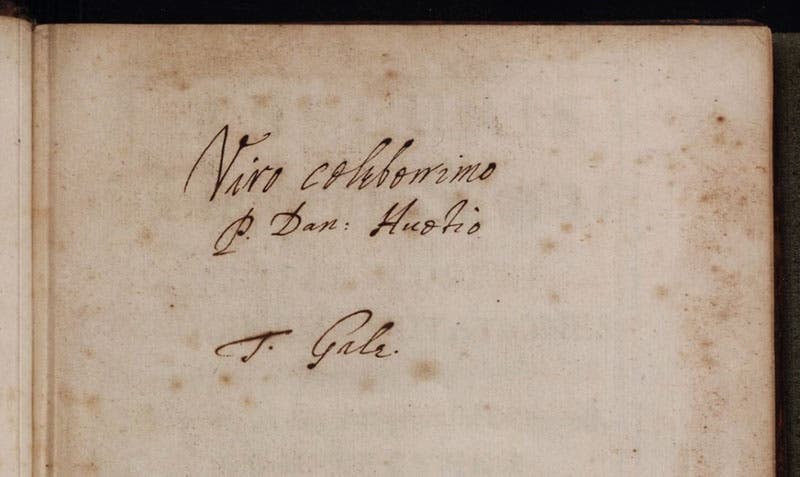Scientist of the Day - Thomas Burnet
Thomas Burnet, an English clergyman and geological theorist, died Sep. 27, 1715, at the age of about 80. Burnet was Master of Charterhouse in London, which was both an almshouse and a school. It is not clear how Burnet became interested in geology and the origins of the earth, but in 1681, he published a volume called Telluris theoria sacra (The Sacred Theory of the Earth) which would soon become one of the most controversial books of the era. In this work, Burnet sought to reconcile René Descartes’ mechanical explanation of the formation of the Earth with the account of the creation of the Earth in Genesis.
Descartes in 1644 had proposed that the Earth was once a star that eventually crusted over, and that features such as mountains and ocean basins were the result of the Earth's drying and cracking, releasing subterranean gases and water that collapsed the crust, making it irregular. Burnet liked this hypothesis, and he especially liked the idea that God had allowed the Earth to create itself, without supernatural intervention. But it was important for Burnet that the gradual formation of the Earth by natural causes should accord with Scripture. So in his book, he explained how that worked. For example, the drying Earth cracked open and released the waters at just the right time to produce the flood of Noah; God foresaw this, and did not have to intervene, allowing natural processes to accomplish His ends. In a second volume, published in 1689, Burnet moved into the future and argued that the still-drying Earth would at some point burst into flames and produce the final conflagration predicted in Revelations; when everything settled down, the Earth would once again be a perfect sphere, just like it was in the days of Eden.
The Telluris theoria sacra was translated into English and published in 1684-90 as The Theory of the Earth: containing an Account of the Original of the Earth, and of all the General Changes Which it hath undergone, or is to undergo. Till the consummation of all Things. The English edition was larger in format, a small folio, and had illustrations not present in the Latin edition. In particular, it acquired an engraved frontispiece, which we reproduce as our first image (since it has led to some confusion, it should be pointed out that the engraved frontispiece adds the word “Sacred” to the title, a word missing from the printed titlepage). The engraving shows a geological history of the earth, acting out the title, with the Earth starting out as a star, then crusting over, smoothing out (that is Eden at the 3 o'clock position), cracking and flooding, and then forming continents as the waters receded, yielding the present-day Earth at the 6 o'clock position. We include a detail of two of the stages so that you can see Noah's ark, being guided by two angels, which would seem to contradict Burnet’s position that God did not intervene at any point in the process (fourth image, below).
Burnet's book aroused a storm of controversy; many objected to the removal of miracles from the Earth's story, and others just didn't like the mechanical process opted for by Burnet, preferring other means, such as comet flybys, to produce the forces needed to shape the earth. Burnet had introduced a new kind of geological treatise, a genre that took its name from his book "Theories of the Earth." We have hundreds of these theories of the earth treatises in our collections, and in 1984, we mounted an exhibition, Theories of the Earth, 1644-1830: The History of a Genre. It was the first exhibition and the first catalog that I curated for the Library. It has never been online, but the last time I checked, copies of the printed catalog were still available. We have written posts about many theorists of the Earth who were reacting to Burnet, including William Whiston, John Woodward, and John Arbuthnot.
Our copy of the first edition of Burnet’s book, the 1681-89 Latin edition, is a special one, as one can see from the front cover, with its coat of arms of a Cardinal (fifth image). The owner is identified by an inscription on one of the endpapers, which we show in our last image. It indicates that the book is a presentation copy from Thomas Gale, an English classical scholar, to Pierre Danie Huet, Bishop of Avranches, and a noted classical scholar himself. In the famous battle of Ancients and Moderns that occupied the French academies in the 1680s and ‘90s, Huet took the side of the Ancients. One wonders what he thought of Burnet's Telluris theoria sacra.
There is a fine oil portrait of Burnet in the National Portrait Gallery in London. However, we have opted to use here the portrait we have in our collection, an engraving that was included in a 1734 edition of his Theory of the Earth (second image).
Dr. William B. Ashworth, Jr., Consultant for the History of Science, Linda Hall Library and Associate Professor emeritus, Department of History, University of Missouri-Kansas City. Comments or corrections are welcome; please direct to ashworthw@umkc.edu.











